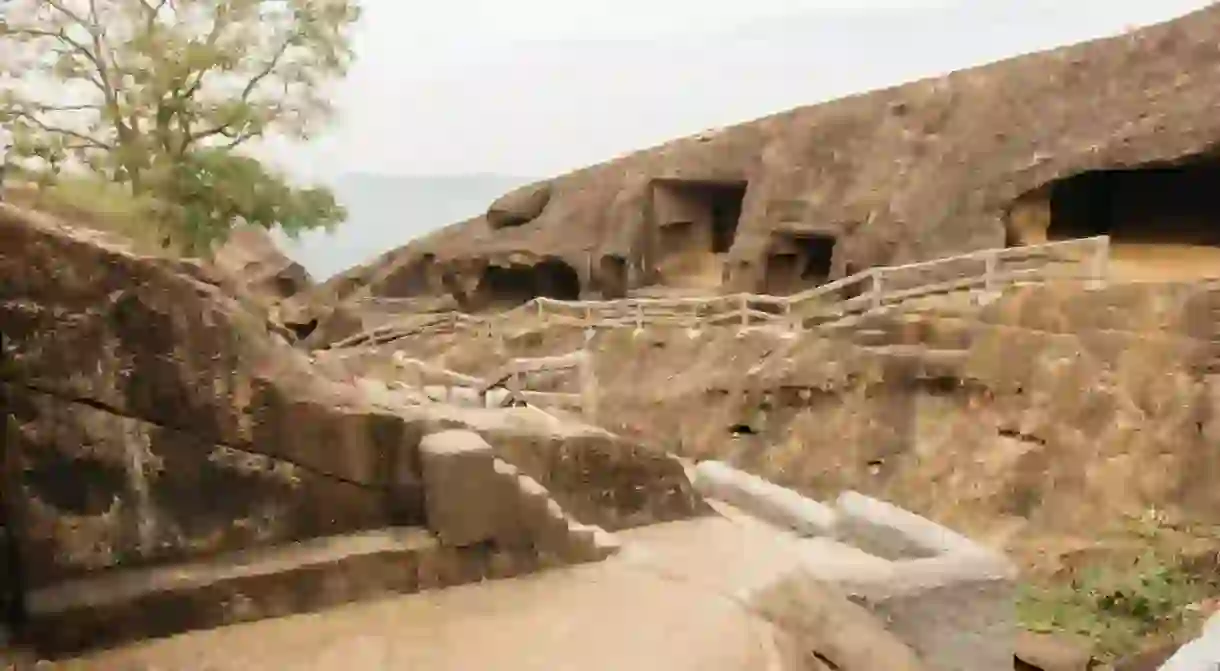The History Of The Kanheri Caves, Mumbai In 1 Minute

Deeply nestled among the tranquil surroundings of the Sanjay Gandhi National Park, Borivali in Mumbai, are more than 100 Buddhist caves popularly known as the Kanheri Caves. Kanheri, known as Krishnagiri or Kanhagiri in ancient inscription, literally means black mountain (Krishna means black and giri is mountain) and is mostly named after its black basaltic stone. Spanning from the 1st century BC to 11th century AD, an era that saw the rise and decline of Buddhism, these caves present an insight into its evolution and also have the distinction of having the largest number of cave excavations from a single hill.



The earliest cave constructions coincide with the arrival of Buddhism in Anathara, Sopara. Most of these caves are simple single or multiple-cell viharas, or monasteries, devoid of any decorations and meant for simple living, studying and meditating. Chaityagraha serves the purpose of worship halls. Most of the decorative art can be seen in later excavations and, in some cases, as a later addition to the earlier caves. A colossal Buddha and Chaityagraha in Cave 3, a large Avalokiteshvara (Bodhisattva who represents compassion) in Cave 2, a painted ceiling in Cave 34 and an evolved water management system (indicated by the presence of water cisterns in almost every cave and huge water tanks) are a few of the highlights at the Kanheri Caves.


Kanheri thrived for nearly a millennium owing to its proximity to the ancient port towns of Sopara (Nalasopara – known for its trading ties with Mesopotamia and Egypt, amongst others), Kalyan, Thane and Bassein (Vasai). Most of these caves have no date, but inscriptions with the mention of donors and specific king names have helped in their identification.



Entrance to the caves is five kilometers farther inside the Sanjay Gandhi National Park’s entrance. There is the option of driving one’s vehicle, walking, taking a bus ride or cycling up to the caves. The caves are closed on Mondays.













